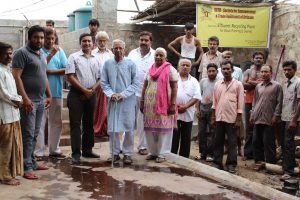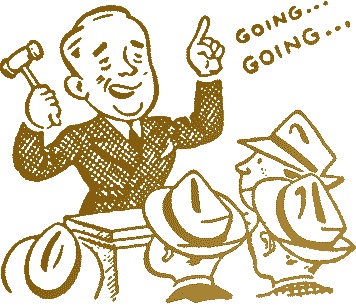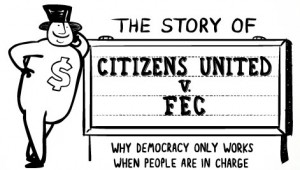 According to bottled-water corporations, the only place to get clean, safe drinking water is from a bottle. News flash: that’s not true. Corporate Accountability International’s ‘Think Outside the Bottle’ campaign aims to challenge the marketing muscle of bottled-water corporations, and works with communities across the United States to opt for tap water over bottled.
According to bottled-water corporations, the only place to get clean, safe drinking water is from a bottle. News flash: that’s not true. Corporate Accountability International’s ‘Think Outside the Bottle’ campaign aims to challenge the marketing muscle of bottled-water corporations, and works with communities across the United States to opt for tap water over bottled.
The ‘Think Outside the Bottle’ campaign has teamed up with the Story of Stuff Project in a new effort to ban bottled water at national parks across the country. According to the campaign, 280 million people visit national parks every summer and consume 2.6 billion gallons of water…from disposable plastic bottles. Yikes.
The following is a guest blog post from 2012 Human Rights Awards honoree, Annie Leonard of Story of Stuff on the campaign to get bottled water out of our national parks.
I love this time of year. School’s out, summer’s in, and millions of people across the United States will reconnect with the wonder and majesty of our national parks.
When I was a kid, our family’s annual camping trips from Seattle to the North Cascades mountains were a real joy. They were also a big part of what turned me into the environmental activist I am today. When you’re out in the wild, surrounded by Earth’s bounty, its hard not to want to protect it.
Each summer, 280 million people visit our national parks. While there, these visitors consume 2.6 billion gallons of water. But way too much of it, sadly, comes from disposable plastic bottles.
We know better, right? Why are visitors to our national parks being sold an obviously wasteful, environmentally unfriendly product?
Several years ago, Coca-Cola and other bottled water corporations leveraged their financial contributions to parks-affiliated foundations to stop a national bottled water phase out proposed by the Park Service. Now, if a park wants to go bottled water free, they must conduct expensive, time-consuming studies to prove what we already know: banning the bottle reduces waste and is the right thing to do.
That’s crazy!
I don’t know about you, but I don’t want plastic bottles polluting our national parks. That’s why we at the Story of Stuff Project have teamed up with our friends at Corporate Accountability International to call on the director of the National Park Service to ban bottled water in all national parks across the U.S.
We even created a short video to spark conversation about the campaign. In it, majestic scenes from our parks — Old Faithful erupting, water cascading down Yosemite’s Bridalveil Falls, an exhilarating trip down whitewater rapids — are laid over with bottled water special effects! Was that a salmon in that Grizzly’s mouth or a liter bottle of water?!
Despite the hurdles put up by Coke, 14 national parks and monuments have gone bottled water-free, including Zion and Arches (Utah), Grand Canyon (Arizona), and Hawaii Volcanoes (Hawaii). They’ve also installed refillable water stations so visitors can stay hydrated without creating plastic waste.
Parks like these are both positively informing the way the public thinks about water — that it is a shared resource, like our parks, not a commodity — and significantly reducing their waste in the process. Up to 20 percent of Grand Canyon National Park’s overall waste stream came from plastic bottles before the phase out.
I know from experience that the public is on our side. Several years ago, our team released The Story of Bottled Water and it has been one of our most popular videos, racking up nearly 5 million views. In a complicated world, choosing tap water and refillable bottles over bottled water is simply a no brainer.
So this summer, before you head out on your vacation in the woods, to the shore or on a raft down the Grand Canyon, make sure you send a message to the Park Service that you’ve got their back—that it’s time to tell Coke to take a hike and for our parks to go bottled water free.
Annie Leonard is the founder of The Story of Stuff Project.
- Learn more about the ‘Think Outside the Bottle’ campaign.
- Watch The Story of Bottled Water.
- Send a message to the Park Service to make our national parks bottled water free.












 Hundreds of species of plants and animals are being wiped out because we are destroying their habitats. Every year, billions of tons of the topsoil that grows our food is disappearing. We are rapidly destroying the forests that absorb carbon dioxide and produce the oxygen we need to breathe. The glaciers and polar ice caps are melting, which will raise ocean levels, threatening the very existence of major cities such as Miami and Houston.
Hundreds of species of plants and animals are being wiped out because we are destroying their habitats. Every year, billions of tons of the topsoil that grows our food is disappearing. We are rapidly destroying the forests that absorb carbon dioxide and produce the oxygen we need to breathe. The glaciers and polar ice caps are melting, which will raise ocean levels, threatening the very existence of major cities such as Miami and Houston. Have you heard about the new film
Have you heard about the new film